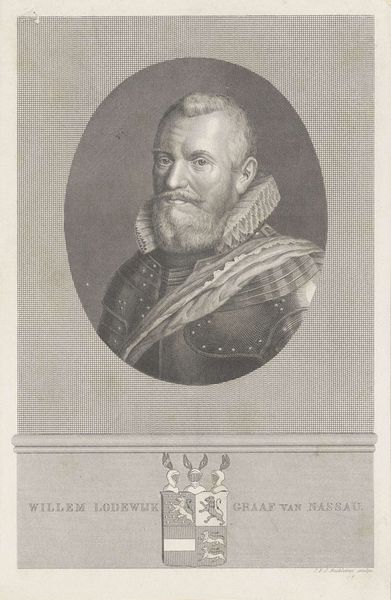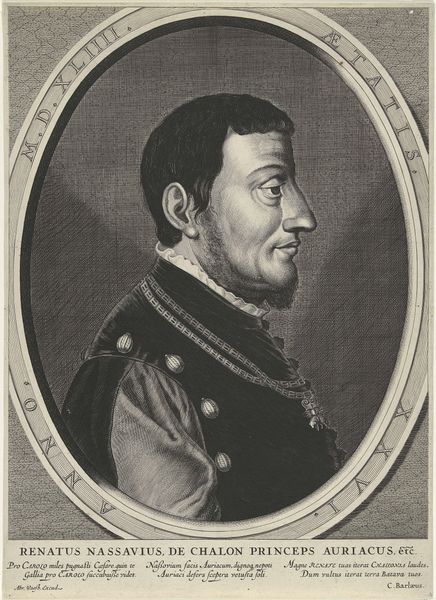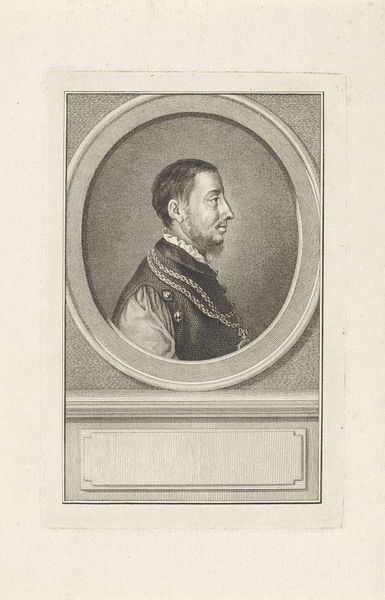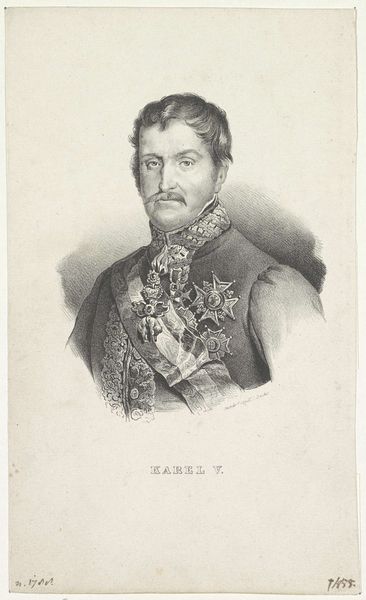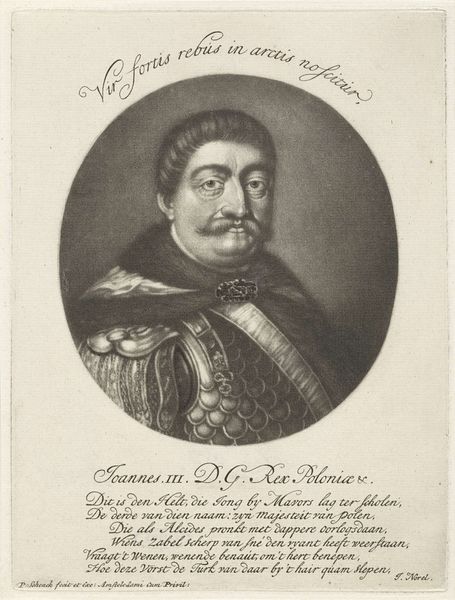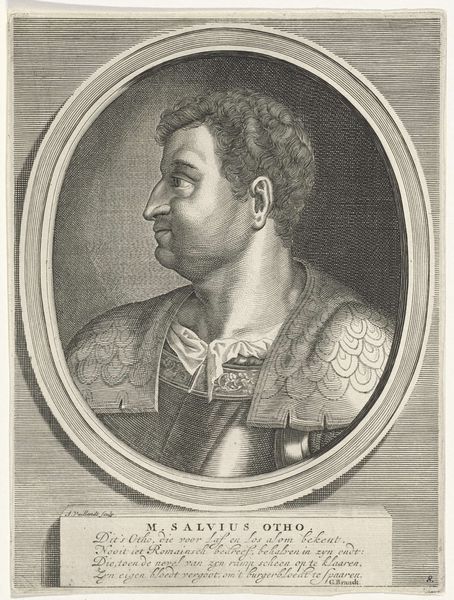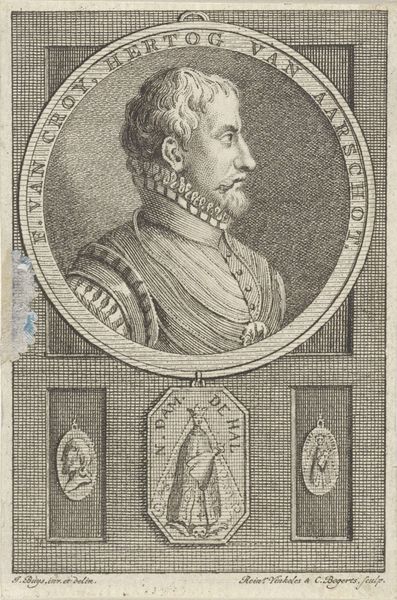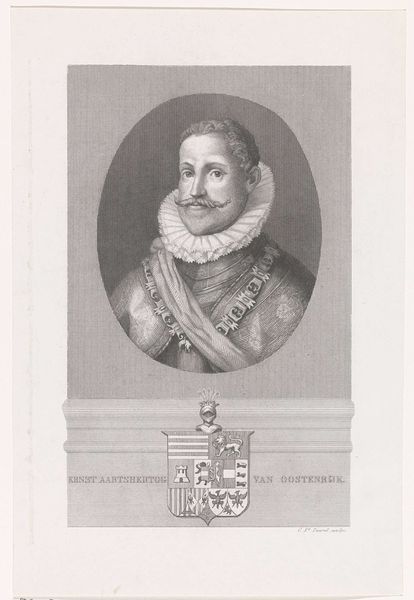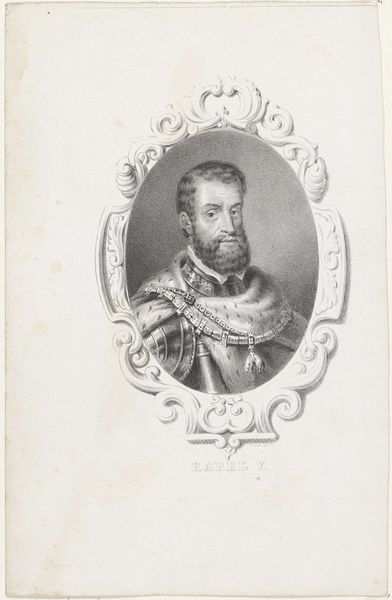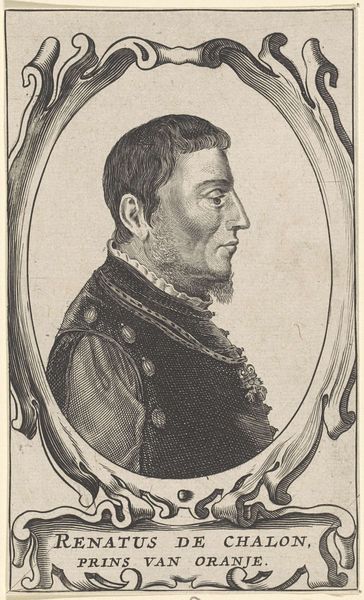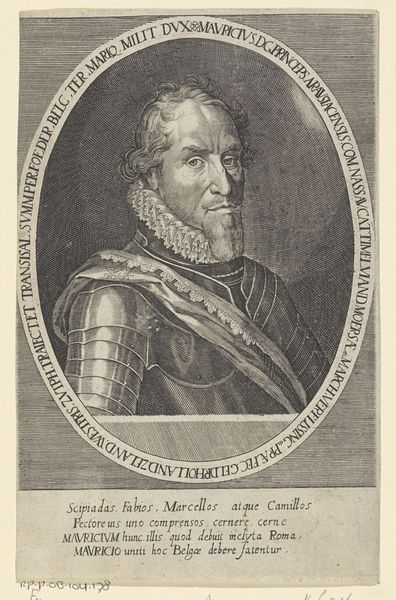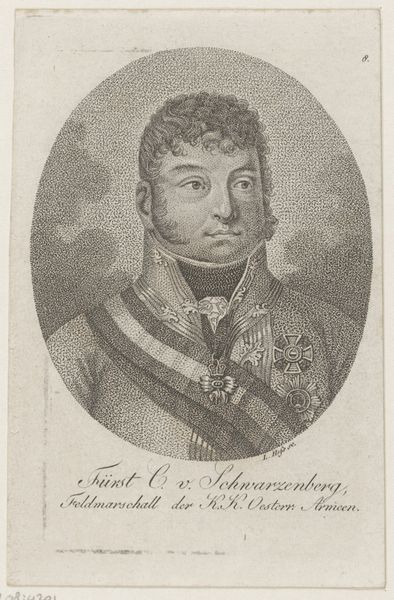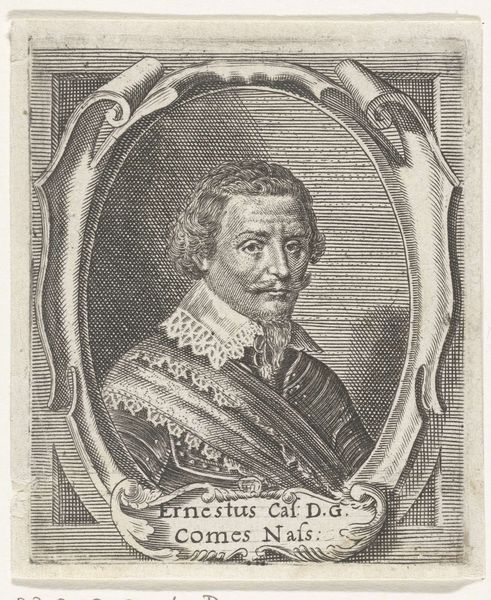
print, metal, engraving
#
portrait
#
baroque
# print
#
metal
#
engraving
Dimensions: height 156 mm, width 113 mm
Copyright: Rijks Museum: Open Domain
Curator: Here we have a print dating roughly from 1610 to 1668, made by Balthazar Moncornet. It's a portrait, engraved on metal, titled "Portret van René van Châlon, prins van Oranje" – a likeness of René of Chalon, Prince of Orange. Editor: The linear precision is quite striking; such rigid contours render the man within it a very cold presence indeed. His gaze meets the distant horizon, seemingly unimpressed by whatever visions there lie. Curator: René's life certainly lends itself to dramatic interpretations. His title, of course, places him squarely within the turbulent politics of the Dutch Republic's formative years. René, as Prince of Orange, held significant symbolic power. He eventually died in battle at a relatively young age. So the engraving serves to further entrench notions of leadership within bloodline and family names, specifically "Oranje," the Dutch word for "orange". Editor: Precisely! The oval frame contains this power within itself. The emblems further encircle and highlight the prince's self-possession through clear, almost mechanical means of linear deployment. Notice the deliberate composition! A very conscious demonstration of symbolic and pictorial power. Curator: The composition emphasizes the visual rhetoric surrounding leadership in that era: note, for example, the details in his attire, and also consider what the artist omits in favor of highlighting very specific visual details and tropes. His identity and what that invokes, in essence, surpasses the individual sitter. Editor: This engraving technique beautifully exploits the semiotic function here, freezing a particular image within the social imagination, which makes this more than a depiction. Moncornet presents, or even, perhaps, manufactures a presence within the popular Baroque taste and tradition. Curator: I agree; through this piece, we glimpse how notions of identity were carefully curated and circulated within very specific historical contexts. The political power of images and how images of powerful and symbolic people shape broader societal movements can truly transform historical interpretations. Editor: Yes, art gives shape and order to such things. Its structural clarity brings order to chaos. Curator: I appreciate having had this opportunity to see him afresh, through a new frame, so to speak. Editor: Indeed. A refreshing dialogue between aesthetics and context.
Comments
No comments
Be the first to comment and join the conversation on the ultimate creative platform.
